By pure chance and good fortune, Virginia Cumming sent me some slides last month in the mail, with a note that these had been taken by her father Bob, and they were ours if we wanted them.
Wow, did we want them! To our knowledge, these are the only color pictures we have of the Cordaville Mills, and certainly the only ones that show their sad demolition.
Here’s a picture of the mills during their prime in the late 1800s. The tower had once contained a bell to summon the workers, but it was replaced by a simple capped roof in this picture.
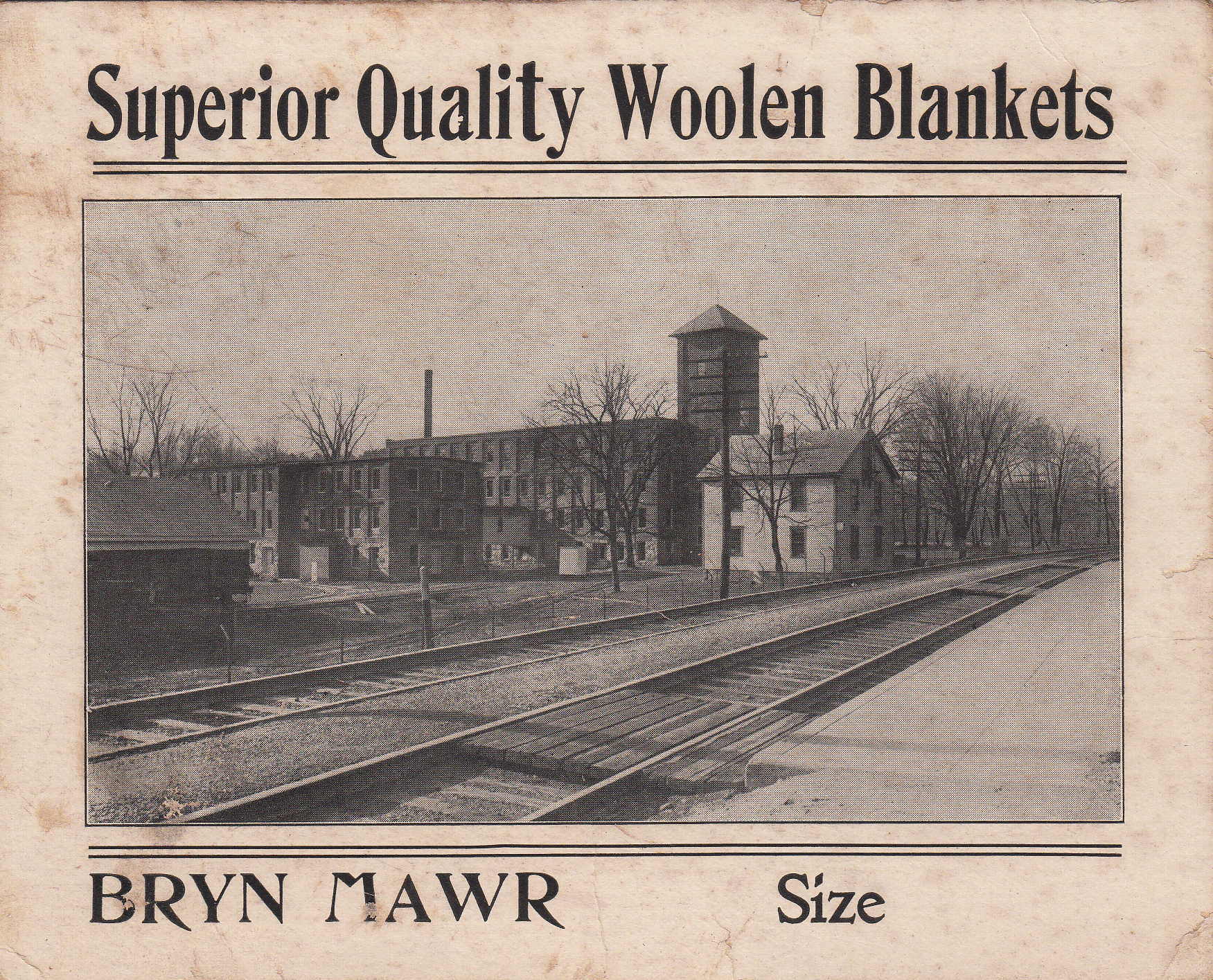
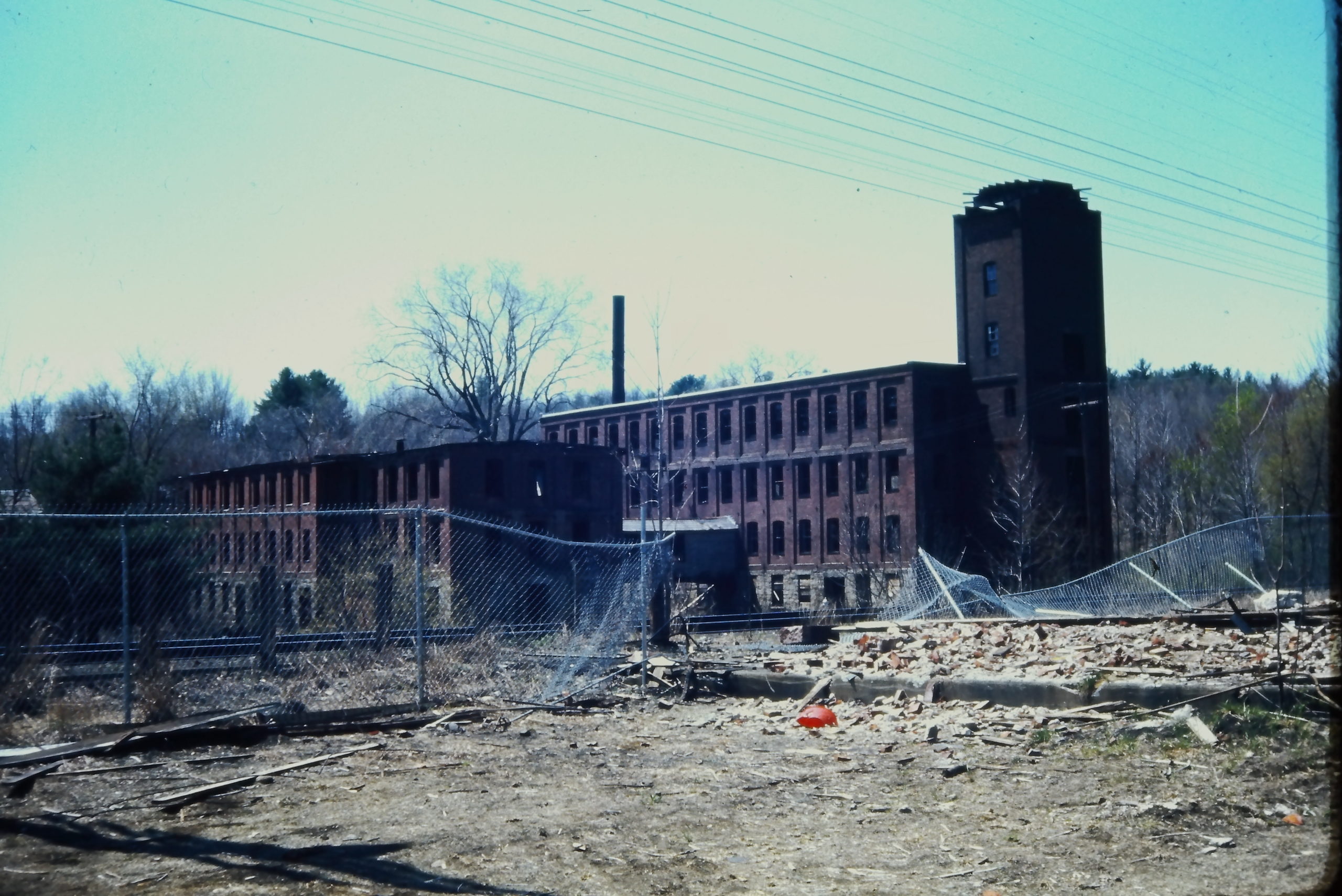
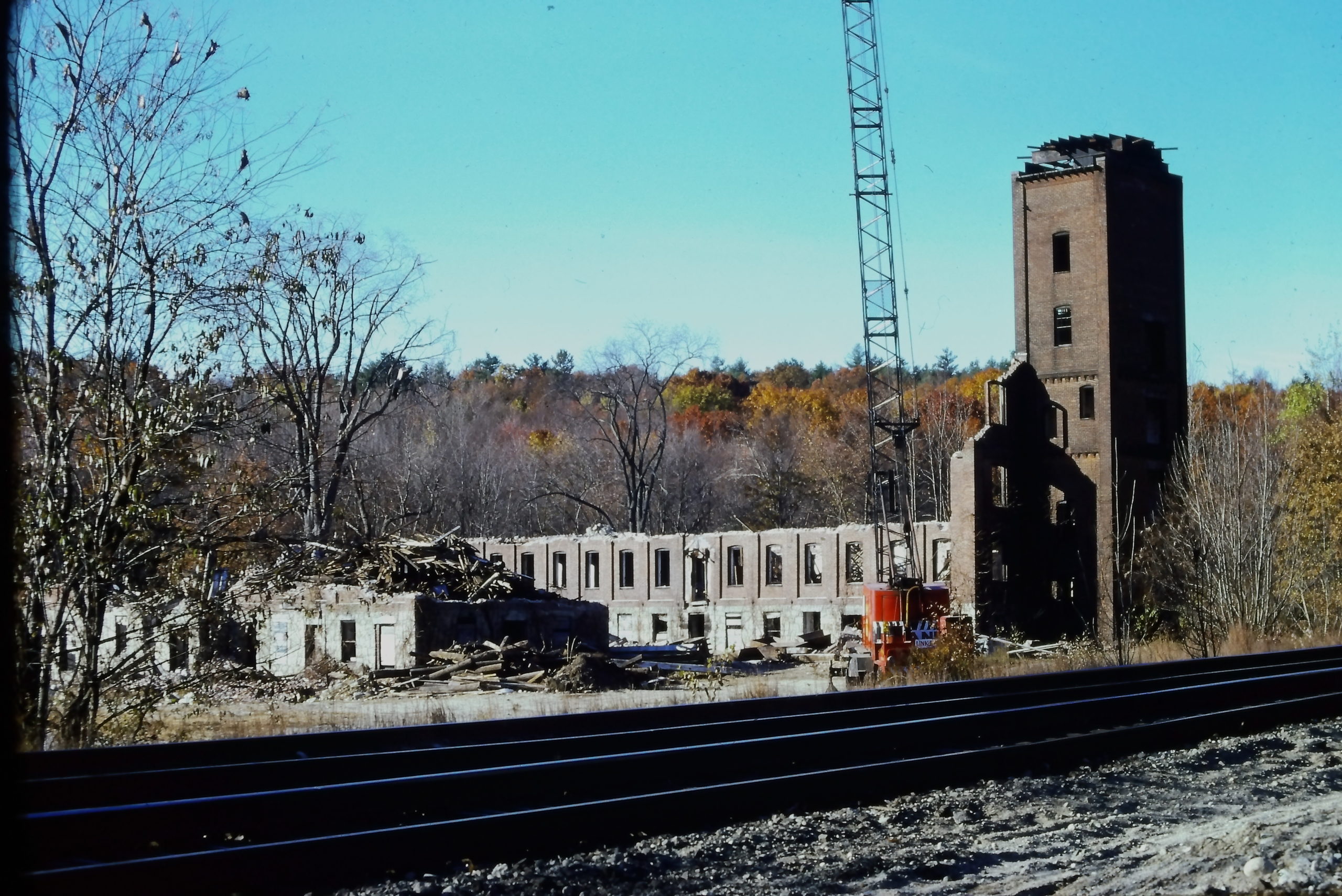
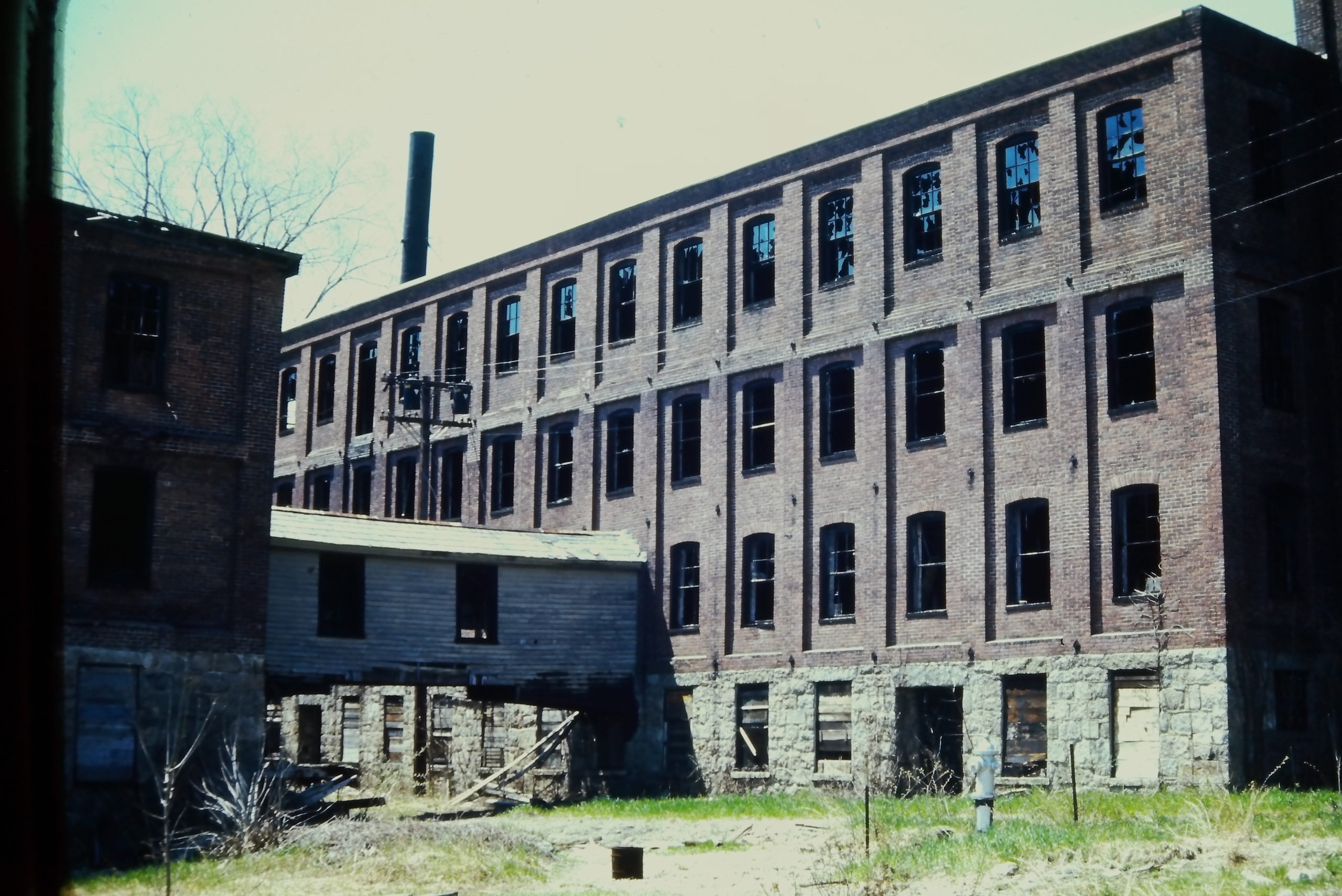
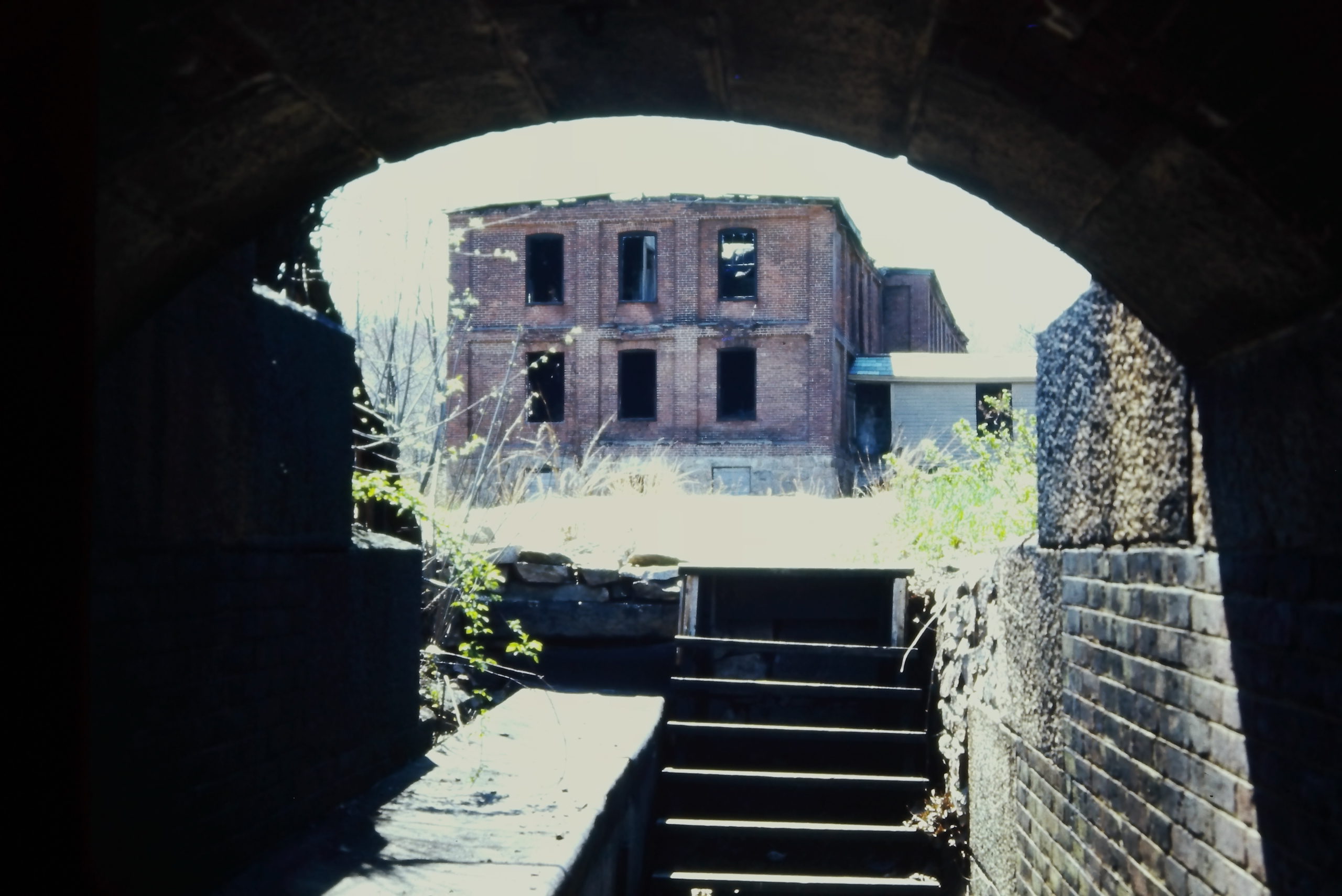
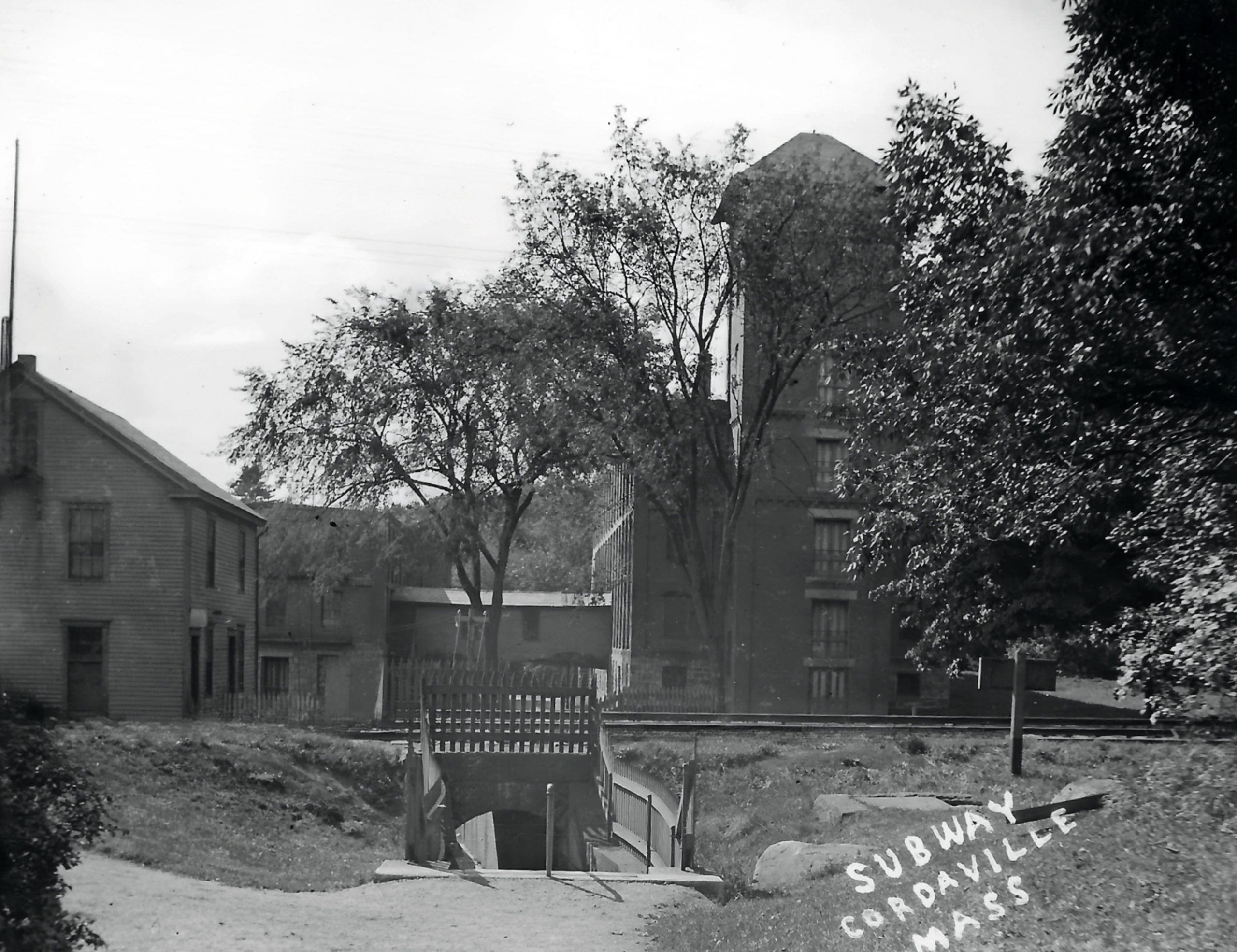
The slides also contained a view of our poor train station, shortly before it’s own demolition:
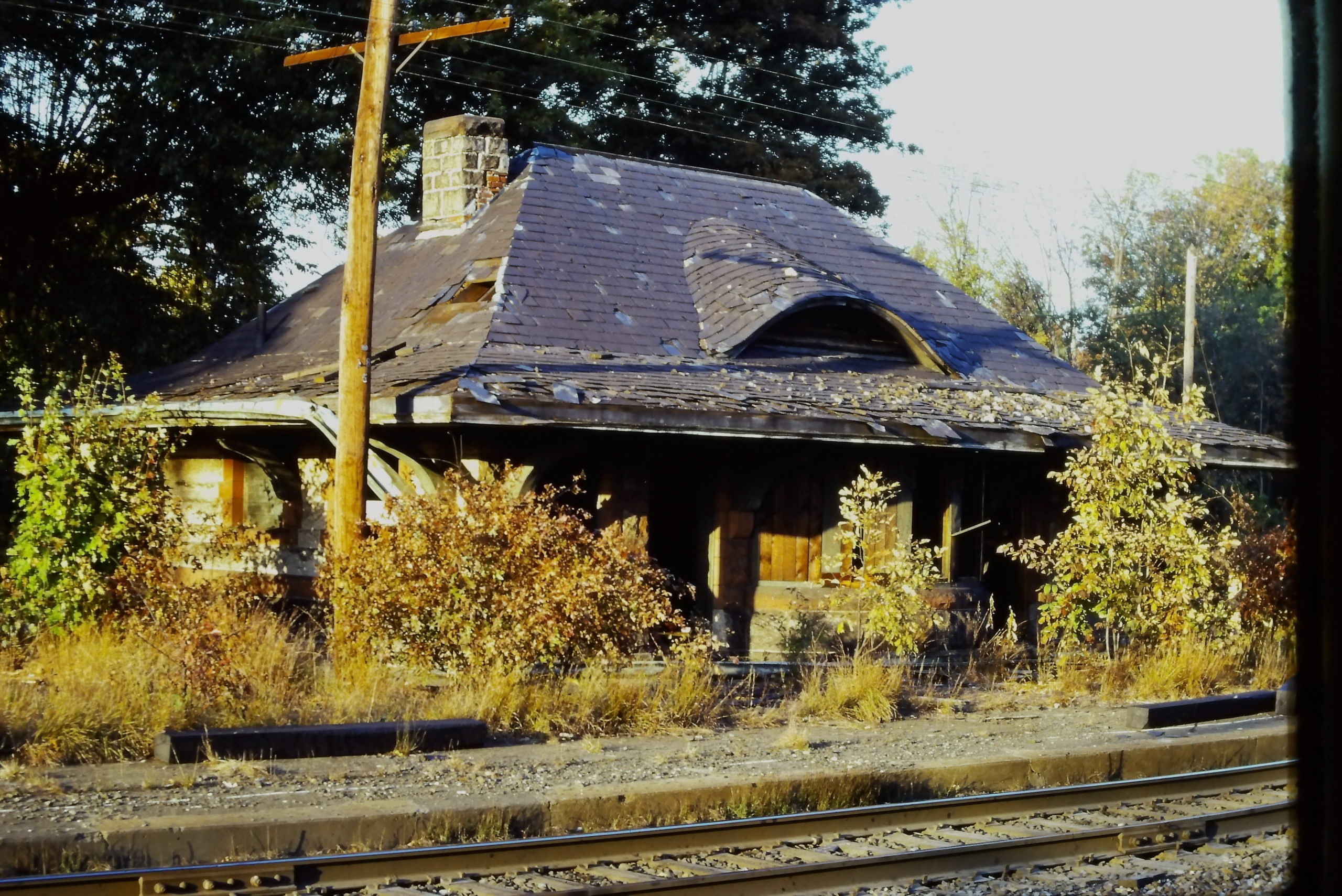
And one last: the side of Fitzgeralds with gas pumps.
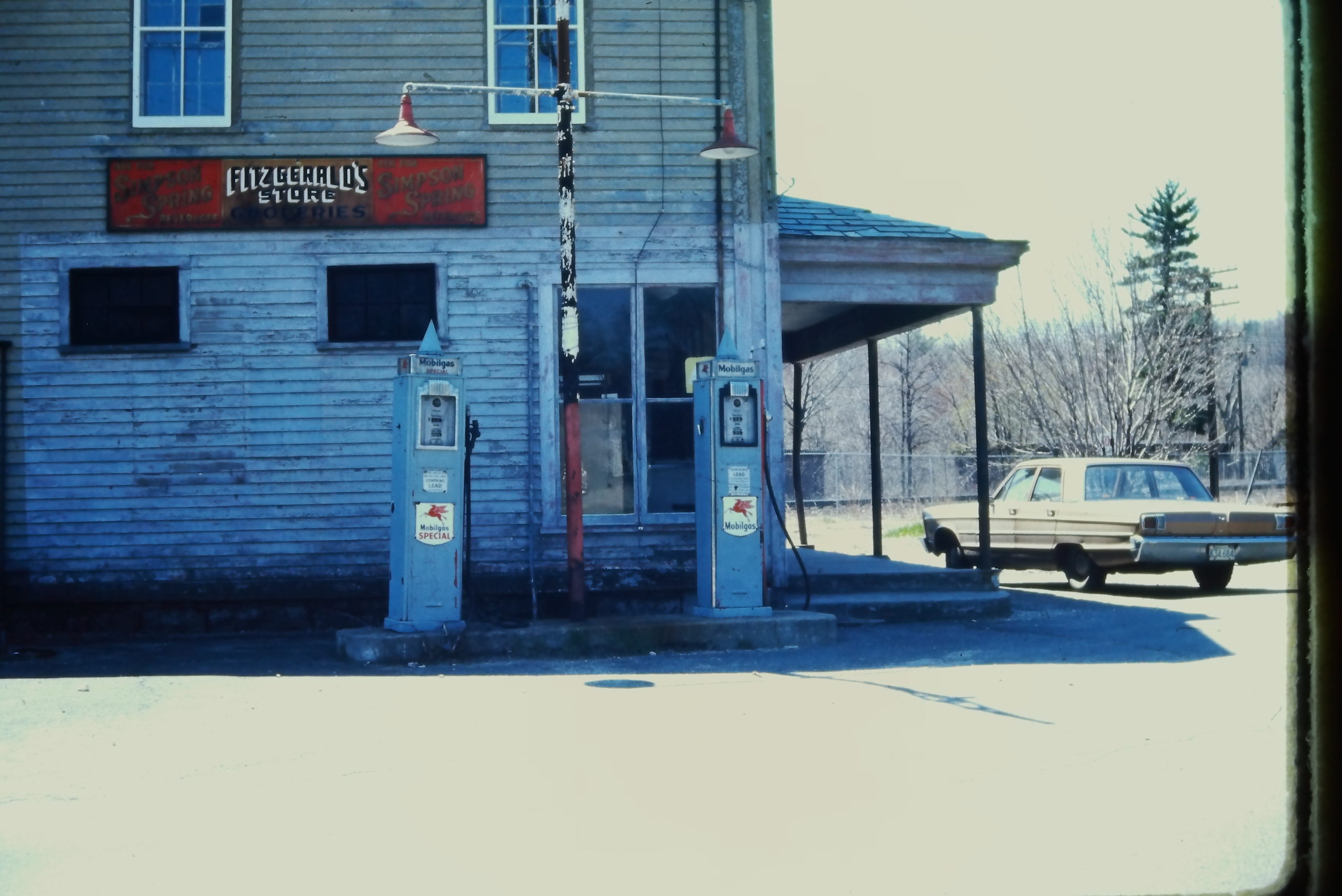
Fitzgeralds, the lone survivor in these views, has recently had quite a facelift, but as for the others, its so sad to think these buildings survived almost to the cusp of public support for historic preservation, only to be torn down. Think of what a wonderful housing complex those mills might have made, solving at one stroke our current MBTA zoning problems.
Thanks again Virginia for this wonderful find! A real coup!
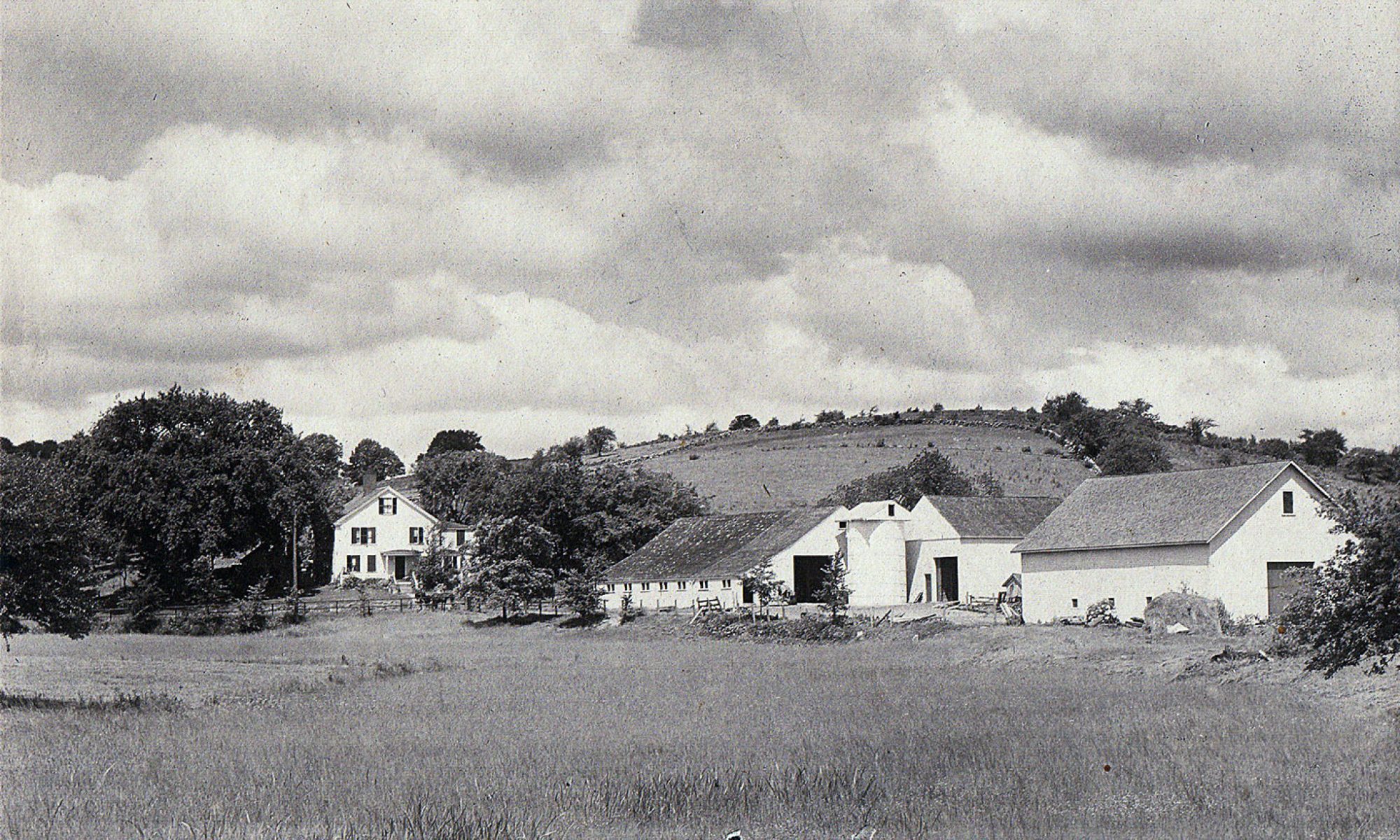
Wonderful to have these!
The Southville train station was torn down. The Cordaville station was dismantled, and reassembled as part of the public library in Dublin, New Hampshire.
Yes, that was the story, but the stone was in fact never reassembled. It is currently considered lost. (The library in Dublin was expanded in 1999.) The only piece we know of is the gravestone of the man who carted the stone to NH in the first place.
Where was the mill? If it had been saved, what a condo conversion it might have been!
It was where the train station now sits, and had the MBTA preserved the historic tunnel as they promised to, people would have been able to access both sides of the tracks without walking around as they do today, but instead they illegally filled it in. Yes, if preserved you could have had a station/restaurant/condo complex bar none.